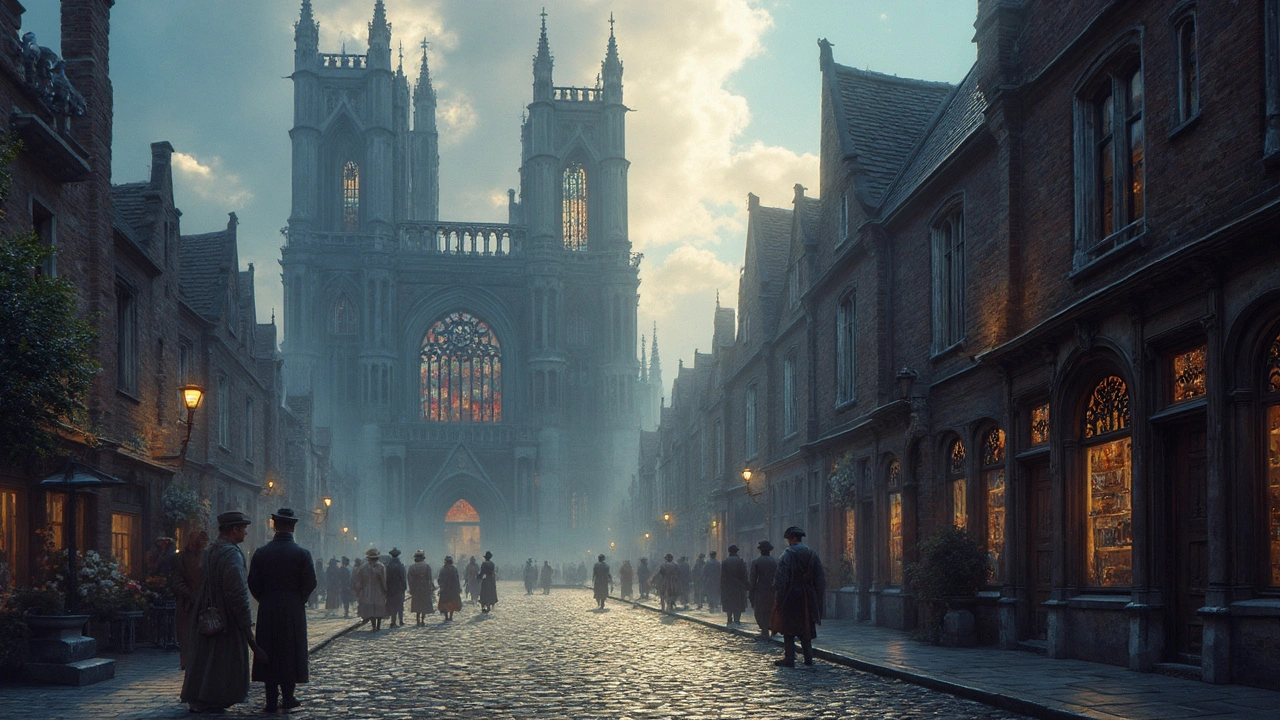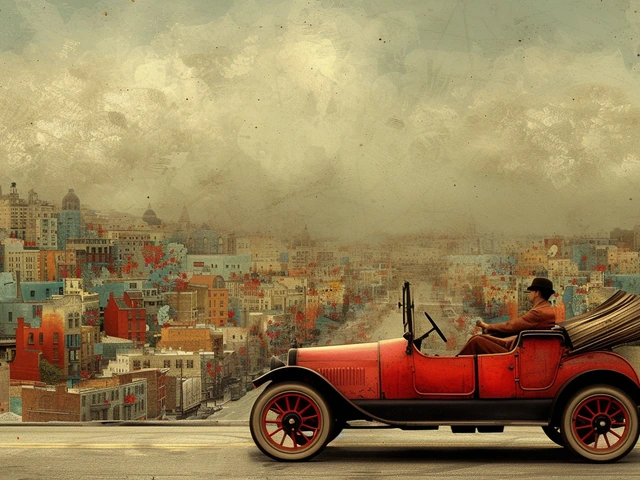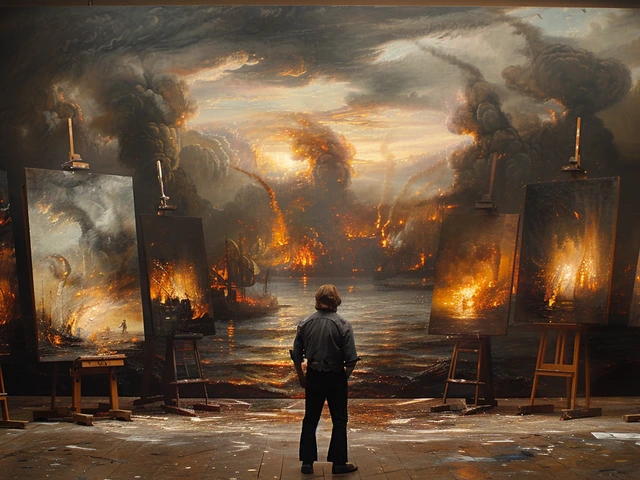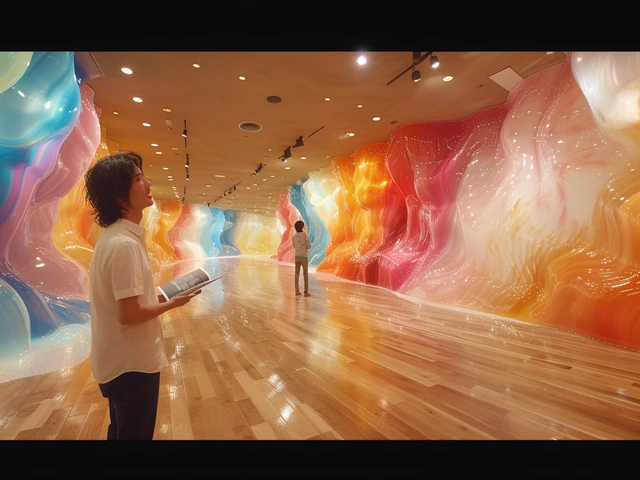Gothic art, ever wondered how it nudged the Romantic movement into existence? Picture this: towering cathedrals with stained glass windows casting hues inside, intricate stone carvings telling silent stories, and spires reaching for the heavens. This is more than just eye-candy; it’s like a historical bridge that helped transform art and culture into a new era—Romanticism.
This artistic style isn’t just about dark and moody vibes. It’s a mix of awe-inspiring architecture and detailed artistry that spoke to the imagination of those who felt hemmed in by the Enlightenment's rigid structure. So, what about this Gothic flair tickled the fancy of Romantic artists? For one, the emotional intensity and dramatic visuals were a breath of fresh air.
The Gothic art movement wasn't just about cool visuals; it helped shake up cultural norms, giving rise to a new wave of artistic expression. Curious about how that Fairyland look and feel impacted the creators of the Romantic movement? Stick around as we explore how Gothic art's compelling features captivated the hearts—and paintbrushes—of Romantics, setting the scene for a creative explosion that still captivates us today.
- The Gothic Revival
- Artistic Characteristics That Inspired Romantics
- Cultural Impact and Evolution
- Gothic Art in Modern Times
The Gothic Revival
If you've ever wandered through a quaint neighborhood and stumbled upon a building that looks like it's straight out of a medieval fairy tale, you've probably witnessed the charm of the Gothic Revival. This architectural movement wasn't just about reviving old styles; it brought new life to medieval art forms in the heart of the 19th century, mainly in Europe and the Americas.
The Gothic Revival wasn't just a random shot in the dark. It started as a reaction to the orderly, classical styles that ruled the roost during the Enlightenment. People were hungry for art that stirred the soul, and the brooding allure of Gothic architecture, with its pointed arches and ribbed vaults, was just the antidote they craved. This wasn’t just about aesthetics; it was a cultural and emotional rebellion.
Take, for example, the Houses of Parliament in London, rebuilt after a fire in 1834. Architect Charles Barry, with his partner Augustus Pugin, embraced Gothic elements like towers and decorative patterns. This iconic building became a shining example of what Gothic Revival could achieve, blending functionality with dramatic flair.
But it wasn't just about big projects. Many folks took to decorating their own homes with Gothic features, creating cozy yet grand atmospheres. The movement also seeped into literature, inspiring stories filled with mystery and medieval fantasy.
The Gothic Revival didn’t just play a role in changing the skyline; it also set the stage for the Romantic movement. By tugging at the heartstrings and challenging the status quo, it paved the way for a new realm of artistic expression. And in doing so, this revival wasn’t just about looking back. It was very much about shaping the future of art and culture.
Artistic Characteristics That Inspired Romantics
So, how did Gothic art light up the imaginations of Romantic artists? It’s all about the extra dose of drama and emotion. Gothic art embraced intense expressiveness, with its detailed textures and dramatic contrast, which was like catnip to Romantic minds seeking to break free from Enlightenment’s logic-driven grip.
One of the standout features was its architecture, especially those breathtaking stained glass windows. Not just pretty; they transformed everyday light into something magical. And let’s not forget about the towering cathedrals. These structures, reaching for the sky, symbolized a yearning for the spiritual, which struck a chord with Romantics.
Gothic art didn’t hold back on the ornamental either. Think of those spooky gargoyles staring down from ancient buildings—imaginative, often symbolic, showing us there’s more than meets the eye. This blend of mystery and grandeur became a playground for Romantic painters and writers alike.
Sometimes, looking at a piece of Gothic art is like being swept into a story. Long ago scenes were often presented with emotional power and a touch of theatrical flair. Romantics loved this narrative quality, as it gave them room to explore human experiences in all their complexity.
Here’s a fun fact: the embrace of the emotional and dark in Gothic art wasn’t just confined to visuals. It seeped into music and literature as well, pushing artists to explore bolder thematic territories. And that’s how this medieval style ended up being a catalyst for whole new genres of expression, not just in Europe but around the world.
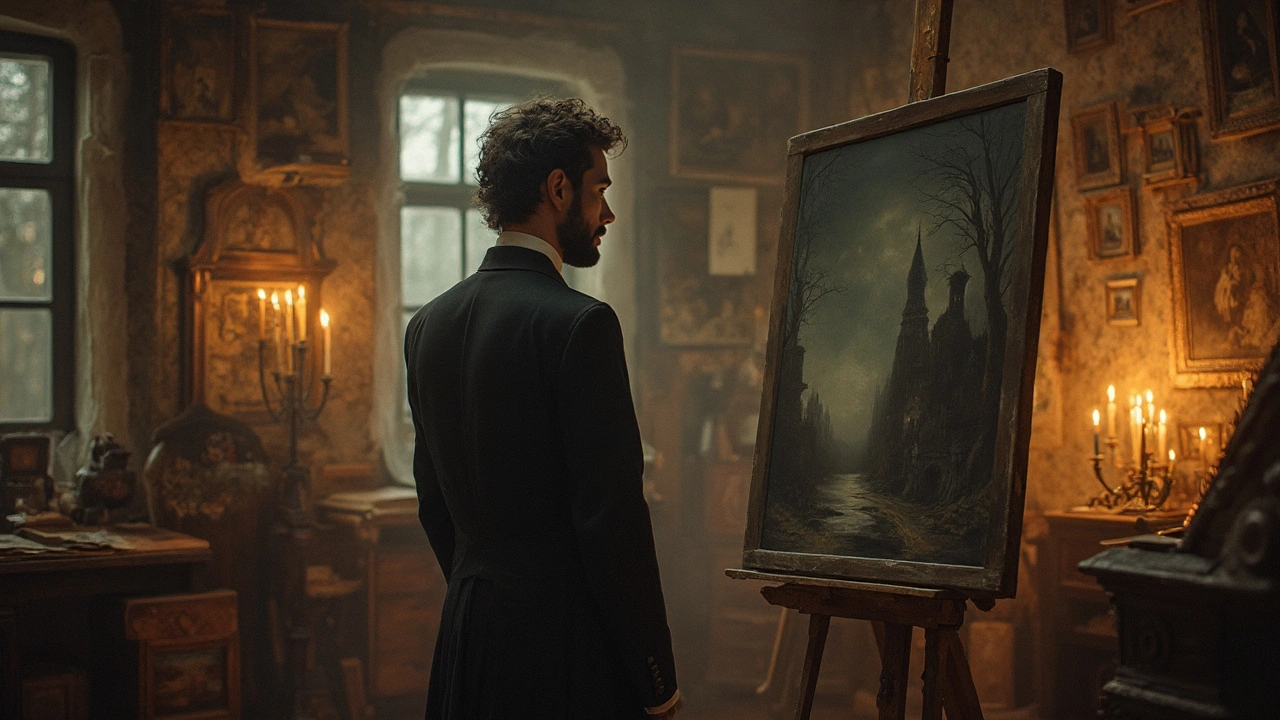
Cultural Impact and Evolution
Gothic art didn't just stay in the realm of cathedrals and pretty paintings; it leaped right into the culture of the time and spurred a change that was impossible to miss. Let's chat about how this Gothic art style made people look at things differently and even stirred up some serious cultural business.
First off, Gothic architecture popped up everywhere, making places like Paris' Notre Dame Cathedral icons of beauty. This wasn't just about showing off, though. The architecture aimed to connect people with something bigger, something spiritual and emotional—a precursor to the Romantic movement.
The influence didn't stop at buildings. Literature swooped in, with writers like Mary Shelley drawing heavily on Gothic themes. Her novel "Frankenstein," for instance, turned Gothic settings and moody atmospheres into a narrative powerhouse. Romantic poets did something similar, using the mysterious essence of Gothic art to fuel stories that were lush with emotion and wonder.
In the art world, Gothic elements slid right into paintings and wider art practices. Artists began to push boundaries, daring to experiment with shadows, light, and emotional cues borrowed from the Gothic art template. These ideas flowed into new, expressive forms that made established art norms look kind of stale.
Why was this all such a big deal culturally? Well, it opened up creativity floods. People started feeling less confined by traditional, rational ways of thinking. Emotion and imagination became not only okay but celebrated. A shift like this set the stage for modern cultural movements by valuing subjective experiences over rigid structures.
If we take a peek at the number of Gothic Revival structures erected worldwide during the height of the Romantic movement, it really shows how popular and impactful this style was. Let's have a look at a rough count in some countries:
| Country | Number of Gothic Revival Structures |
|---|---|
| France | 500+ |
| England | 350+ |
| United States | 300+ |
| Germany | 200+ |
That’s a lot of buildings reshaping skylines and mindsets across different nations!
Overall, Gothic art was like a cultural revolution catalyst. It nudged artistic and cultural boundaries out of their comfort zones and into new, vibrant places. And these days, you can still see its fingerprints on everything from fashion to film, reminding us that sometimes looking back is the best way to move forward.
Gothic Art in Modern Times
While some might think Gothic art is only something out of dusty old history books, it’s still kicking around today in the most unexpected places! Its intricate designs and mysterious vibes have found their way into modern architecture, fashion, and even pop culture. Remember the moody structures in Tim Burton films or the slick urban styles showcasing Gothic-inspired designs? That’s modern Gothic art strutting its stuff.
A lot of contemporary architects are pulling inspiration from Gothic architecture. You’ll see sharp lines and dramatic silhouettes popping up in new buildings everywhere. The Sagrada Família in Barcelona, designed by Antoni Gaudí, is a prime example, blending Neo-Gothic and Art Nouveau styles.
In fashion, influences from the Gothic movement show up in all-black ensembles, rich velvet, lace details, and statement jewelry reminiscent of the Medieval era. Icons like Alexander McQueen have pushed these into mainstream fashion with collections that fuse dark romanticism and edginess.
Movies, TV shows, and even video games continue to draw on Gothic themes—not just for a spooky vibe but for deeper storytelling. Games like “Bloodborne” are steeped in Gothic aesthetics, from eerie landscapes to haunting music, creating immersive worlds that captivate players with their dark charm.
And with a cultural shift towards sustainable design, artists are revisiting old Gothic structures to transform and preserve them as public spaces. In fact, a recent survey showed that over 60% of urban renewal projects in Europe incorporate Gothic-style elements to add historical intrigue to modern life.
So next time you spot a shadowy building or a fashion piece that screams "dark romantic,” know that it carries a piece of the Gothic spirit. It’s a fabulous reminder that while trends come and go, the core appeal of Gothic art remains steadfast—a timeless blend of drama and elegance.

